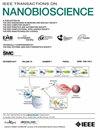Spatial Pattern Switching Strategy: A Successful Application in the Bimolecular Model
IF 4.4
4区 生物学
Q1 BIOCHEMICAL RESEARCH METHODS
引用次数: 0
Abstract
The formation of spatial patterns plays a crucial role in the study of system spatiotemporal dynamics. Previous research has demonstrated that spatial patterns can effectively characterize the macroscopic spatial structure of the reaction-diffusion system. While specific pattern structures, such as the hexagonal, mixed, and stripe pattern, have been identified, the interconnection between these patterns appears to be isolated and invariant. To facilitate the selection and switching between individual spatial patterns, the hybrid control strategy is applied to the bimolecular model for the first time. For the classical bimolecular model of the chemical reaction-diffusion system, the incorporation of two-dimensional diffusion extends its reaction space to the two-dimensional plane. The Turing instability conditions are obtained for the controlled bimolecular system. Through the weakly nonlinear analysis, the amplitude equations are derived near the Turing bifurcation threshold. Furthermore, we investigate the impact of each control parameter on the Turing bifurcation threshold and determine the distribution of spatial patterns and their stability through the amplitude equations. Simulation results indicate that by selecting appropriate control parameters, we can suppress the occurrence of Turing instability and facilitate transitions between the spatial patterns. The findings of the analysis offer valuable insights into the dynamics and control of pattern formation in reaction-diffusion systems.空间模式转换策略:在双分子模型中的成功应用。
空间格局的形成在系统时空动力学研究中起着至关重要的作用。已有研究表明,空间格局可以有效表征反应扩散体系的宏观空间结构。虽然已经确定了特定的图案结构,如六边形、混合和条纹图案,但这些图案之间的相互联系似乎是孤立的和不变的。为了方便个体空间模式之间的选择和切换,首次将混合控制策略应用于双分子模型。对于化学反应-扩散系统的经典双分子模型,二维扩散的加入将其反应空间扩展到二维平面。得到了受控双分子体系的图灵不稳定性条件。通过弱非线性分析,导出了图灵分岔阈值附近的振幅方程。进一步研究了各控制参数对图灵分岔阈值的影响,并通过振幅方程确定了空间模式的分布及其稳定性。仿真结果表明,通过选择合适的控制参数,可以抑制图灵不稳定性的发生,促进空间模式之间的转换。分析的结果为反应扩散系统中图案形成的动力学和控制提供了有价值的见解。
本文章由计算机程序翻译,如有差异,请以英文原文为准。
求助全文
约1分钟内获得全文
求助全文
来源期刊

IEEE Transactions on NanoBioscience
工程技术-纳米科技
CiteScore
7.00
自引率
5.10%
发文量
197
审稿时长
>12 weeks
期刊介绍:
The IEEE Transactions on NanoBioscience reports on original, innovative and interdisciplinary work on all aspects of molecular systems, cellular systems, and tissues (including molecular electronics). Topics covered in the journal focus on a broad spectrum of aspects, both on foundations and on applications. Specifically, methods and techniques, experimental aspects, design and implementation, instrumentation and laboratory equipment, clinical aspects, hardware and software data acquisition and analysis and computer based modelling are covered (based on traditional or high performance computing - parallel computers or computer networks).
 求助内容:
求助内容: 应助结果提醒方式:
应助结果提醒方式:


